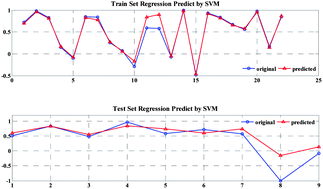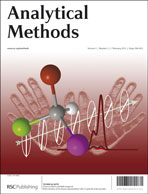Composition–activity relationship modeling to predict the antitumor activity for quality control of curcuminoids from Curcuma longa L. (turmeric)
Abstract
Composition–activity relationship (CAR) modeling is a novel and appropriate method to evaluate the quality of traditional Chinese medicines (TCMs) for it can correlate the chemical constituents of TCMs with their bioactivity. In this paper, we studied the relationship between the antitumor activity on HeLa cells and the curcuminoids from thirty one batches of Curcuma longa L. using support vector regression (SVR) models. Two types of SVR models (ε-SVR and ν-SVR) combined with three kernel functions—a LKF (linear kernel function), a PKF (polynomial kernel function) or a RBKF (radial basis kernel function)—were employed. Three algorithms—a GA (genetic algorithm), a PSO (particle swarm optimization), or a GSA (grid search algorithm)—were adopted to determine the optimal parameters automatically. The results revealed that the ε-SVR-RBKF-PSO model had the best model performance with a high correlation coefficient (Q = 0.9297) and a low mean square error (MSE = 0.0138) between the experimental and predicted values. This indicated that the model was able to predict the antitumor activity of curcuminoids from Curcuma longa L. with a high degree of accuracy. Therefore, CAR modeling could be a useful tool in the quality control of TCMs.


 Please wait while we load your content...
Please wait while we load your content...